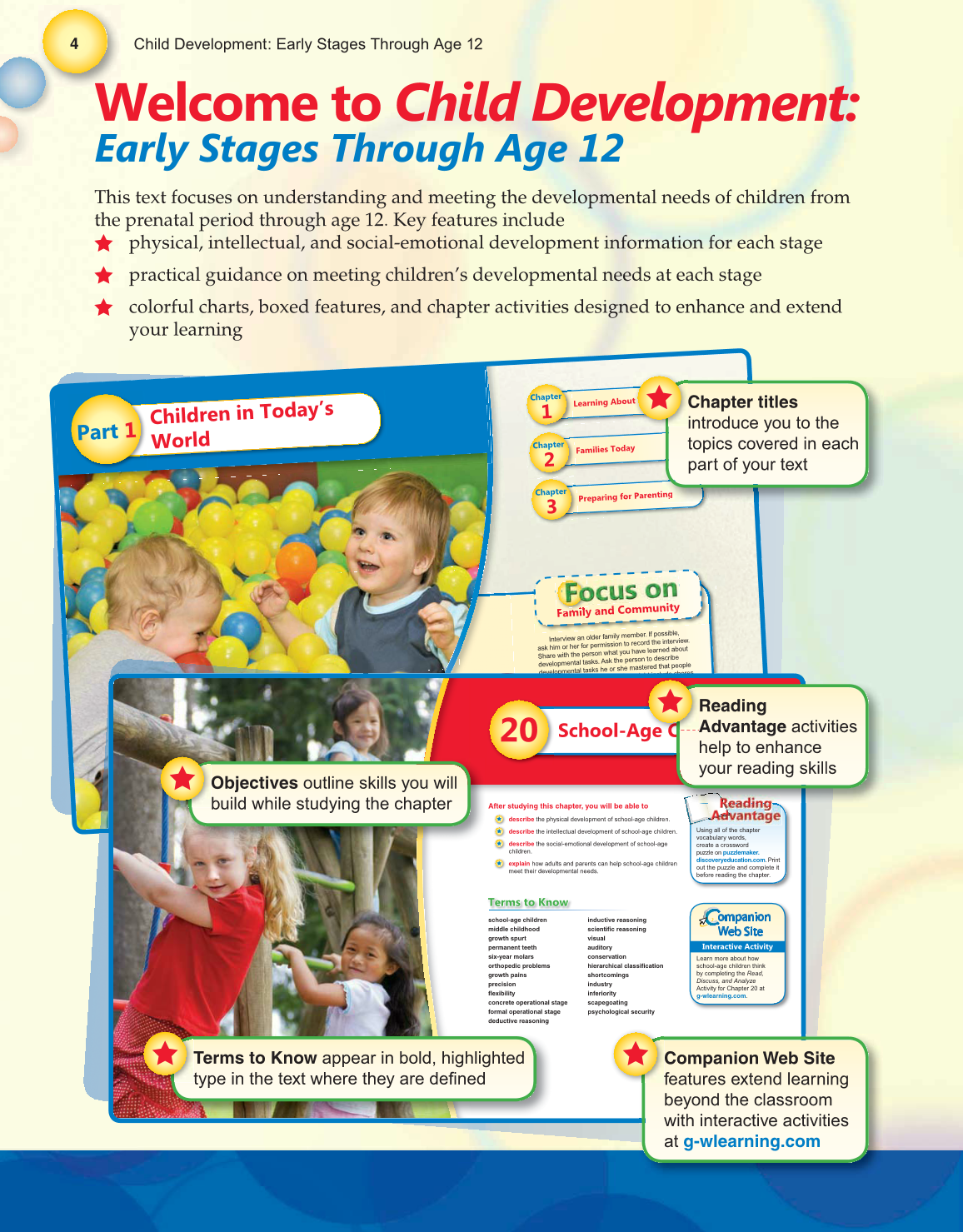4 Child Development: Early Stages Through Age 12
19
Children in Today’s
World
Part 1
Learning About Children
Families Today
Preparing for Parentingng
Interview an older family member. If possible,
ask him or her for permission to record the interview.
Share with the person what you have learned about
developmental tasks. Ask the person to describe
developmental tasks he or she mastered that people
seldom master today. Examples might include chores,
hobbies, games, and job duties of the past. Create a
family history book by adding photos to written stories
and memories. Take it a step further and develop an
FCCLA
Power of One
project for
Family Ties. Use
the FCCLA
Planning Process
to plan, carry out, and
evaluate your project. Your FCCLA advisor can
you with further information.
Family and Community
Chapter
1
Chapter
2
Chapter
3
421
20
School-Age Children
After studying this chapter, you will be able to
describe the physical development of school-age children.
describe the intellectual development of school-age children.
describe the social-emotional development of school-age
children.
explain how adults and parents can help school-age children
meet their developmental needs.
Terms to Know
Using all of the chapter
vocabulary words,
create a crossword
puzzle on puzzlemaker.
discoveryeducation.com. Print
out the puzzle and complete it
before reading the chapter.
ompanion
Web Site
Interactive Activity
Learn more about how
school-age children think
by completing the Read,
Discuss, and Analyze
Activity for Chapter 20 at
g-wlearning.com.
Readinggnd
Advantage
school-age children
middle childhood
growth spurt
permanent teeth
six-year molars
orthopedic problems
growth pains
precision
fl exibility
concrete operational stage
formal operational stage
deductive reasoning
inductive reasoning
scientifi c reasoning
visual
auditory
conservation
hierarchical classifi cation
shortcomings
industry
inferiority
scapegoating
psychological security
Welcome to Child Development:
Early Stages Through Age 12
This text focuses on understanding and meeting the developmental needs of children from
the prenatal period through age 12. Key features include
physical, intellectual, and social-emotional development information for each stage
practical guidance on meeting children’s developmental needs at each stage
colorful charts, boxed features, and chapter activities designed to enhance and extend
your learning
Chapter titles
introduce you to the
topics covered in each
part of your text
t Ch C C C C C C
hild re e
Objectives outline skills you will
build while studying the chapter
Terms to Know appear in bold, highlighted
type in the text where they are defi ned
T T
CprovideAdvantage
Readin ad g
Reading
activities
help to enhance
your reading skills
ge C C C C C C C C C C C C C C
Companion Web Site
features extend learning
beyond the classroom
with interactive activities
at g-wlearning.com
f
